Special Report
20 Classics Every American Should Read, According to English Professors
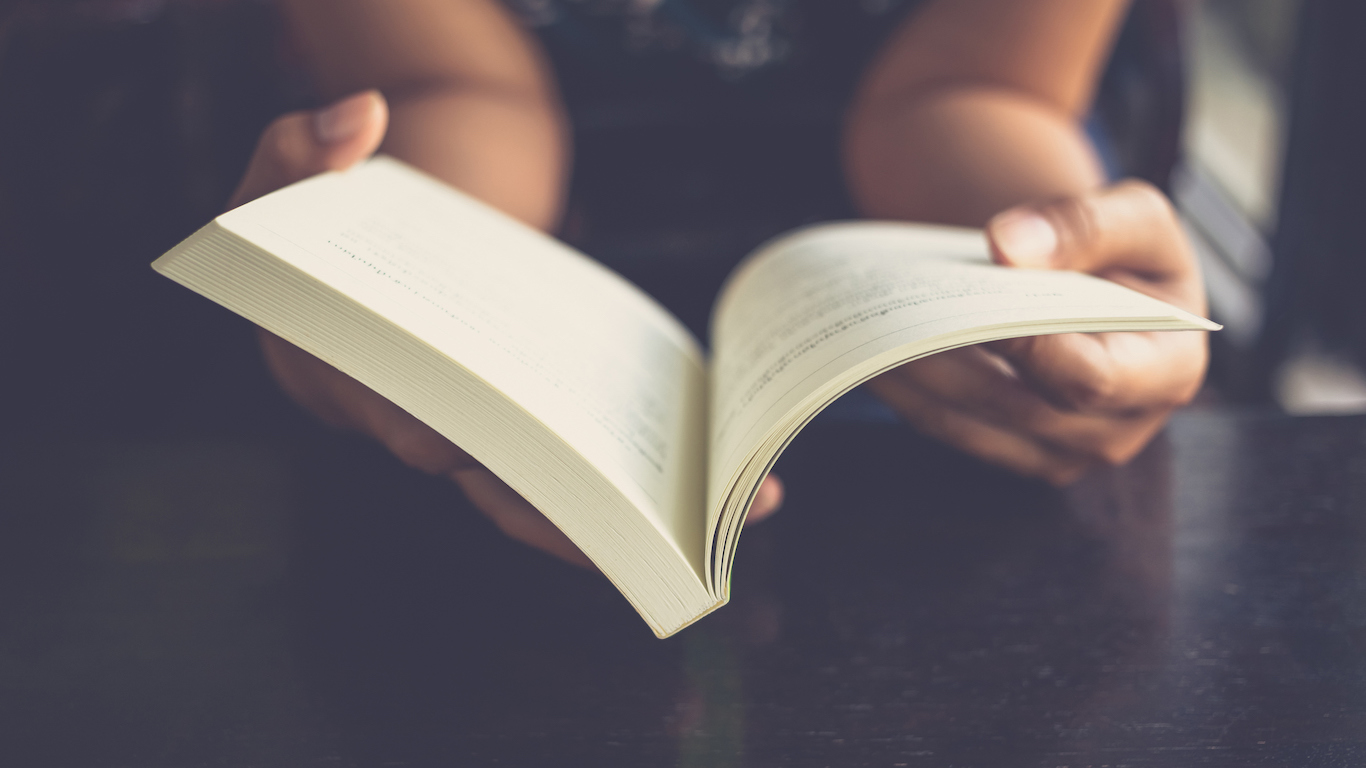
Published:
Last Updated:

Toni Morrison, the first African-American woman to win the Nobel Prize for Literature, has died. Some of her books — “Beloved” and “God Help the Child” — which explore the lives of African Americans in great prose and tackle issues such as slavery and misogyny, are already part of university curricula and considered classics.
Like all forms of art, literature is open to interpretation. Ask five people and you may get 10 different descriptions of what constitutes a classic novel. The English literature curriculum at schools and universities changes over the years. As time goes by, new books are added to the “must-read” category, which still includes works by William Shakespeare, Charles Dickens, and F. Scott Fitzgerald.
24/7 Tempo reached out to several English professors to compile a list of 20 English literature classics everyone should read at least once. (The list does not include novels written in languages other than English.)
“Certainly the [literary] canon has changed since I began teaching 35 years ago,” said Paula Uruburu, Ph.D., professor of English at Hofstra University. It has become more inclusive, which means more women writers, including women of color, as well as African American, Native American, Asian, continental, developing world, and LGBTQ authors, she noted. “It has also expanded to include graphic novelists.”
How and why new and old books make it into the curriculum is not rocket science. “I think the most important change has come not from any political correctness, but from humanities departments’ weakened position in the university,” said Douglas Buster, Ph.D., professor of American and English Literature at the University of Texas at Austin. Professors can sometimes teach works that please students as opposed to those that might be more challenging, he noted.
This is perhaps how some newer books are often called “classics.” Many people are reading a book, and it becomes noteworthy. For example, if you include Young Adult new classics in a list of classics, then Harry Potter might seem like a natural choice. But to answer whether it should be among the all-time literary classics like “Romeo and Juliet,” only time could tell.
People’s reading preferences change, and new authors, each with his or her own style, publish books every day. If they achieve any recognition at all, most books remain popular for a short period of time. A select few, however, stand the test of time, meritting lasting recognition. The books on the following list fall in the latter category.
Click here to see the 20 classics every American should read, according to English professors
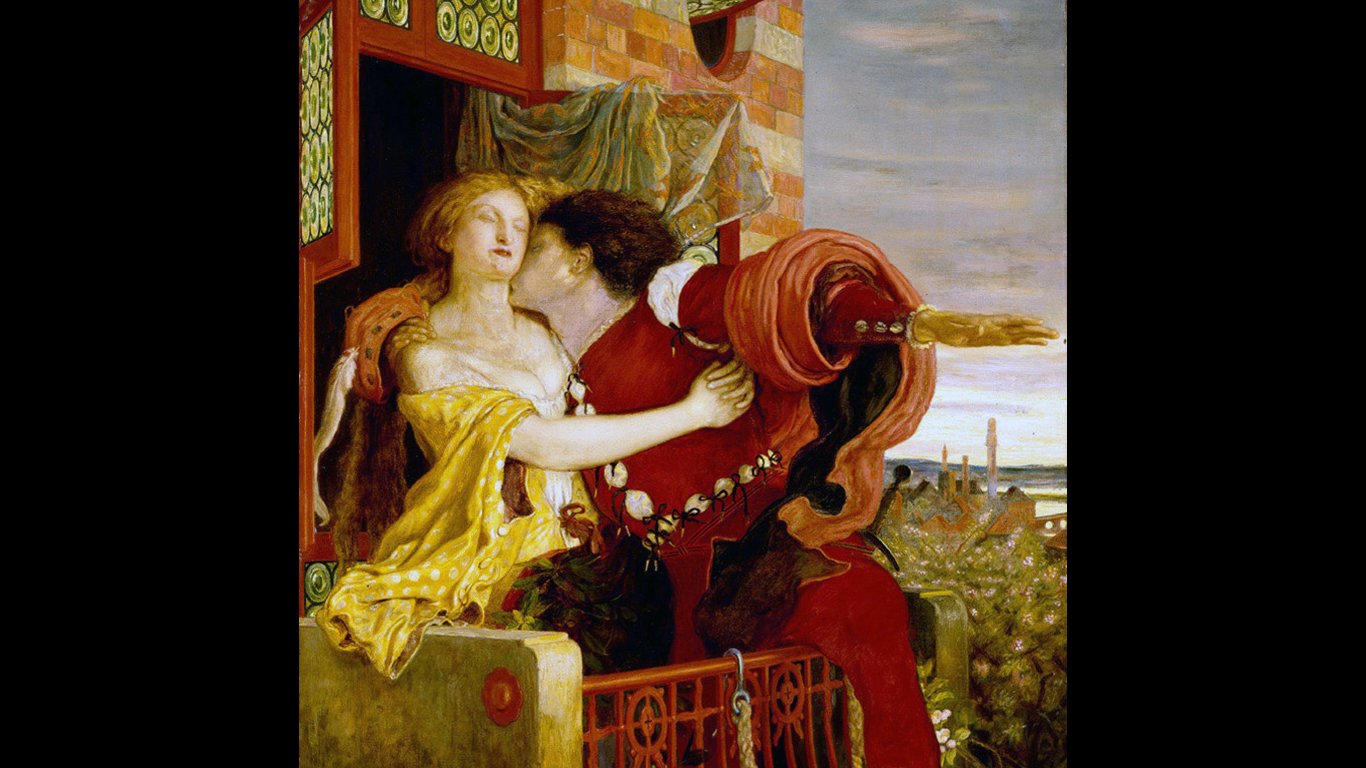
1. Romeo and Juliet
> Author: William Shakespeare
> Originally published in: 1597
“Romeo and Juliet” is perhaps the most famous tragedy ever written. The story about the two youngsters from feuding families who fall in love and die trying to stay together is among the most frequently performed plays and has been turned into several movies.
“No one appreciates how good ‘Romeo and Juliet’ is because everyone encounters it too early in school,” Buster said.
[in-text-ad]

2. Pride and Prejudice
> Author: Jane Austen
> Originally published in: 1813
“Pride and Prejudice” is one of the most famous romantic novels. Even though it’s set in rural England at the beginning of the 19th century, the story is still relevant today. A powerful and proud man falls in love with an independent and proud woman, who dislikes him at first but eventually begins to see him in a different light.
The novel can be analyzed from a variety of critical perspectives, Uruburu said. “And even those perspectives change with the years.”
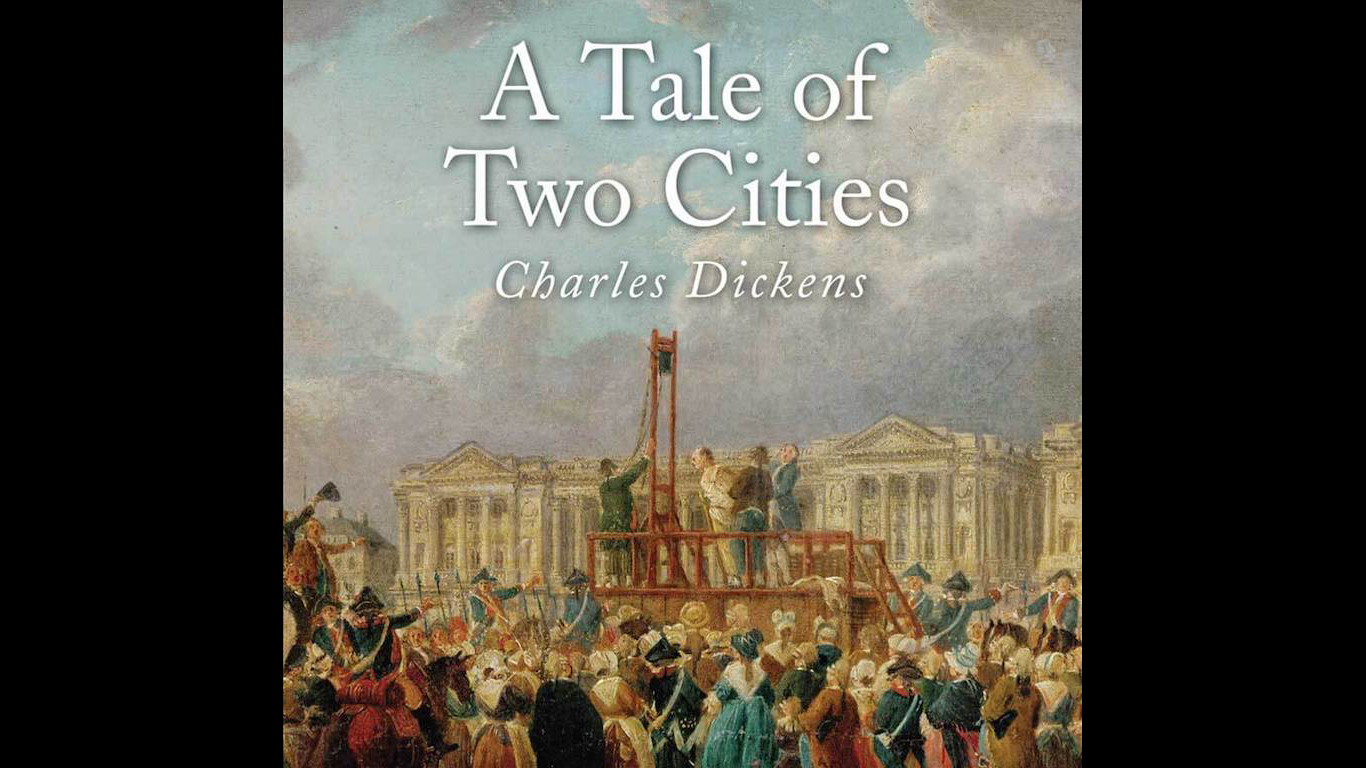
3. A Tale of Two Cities
> Author: Charles Dickens
> Originally published in: 1859
“A Tale of Two Cities” is a novel that spans London and revolutionary Paris and shows how personal events can be driven by political drama. It is on almost every literary classics list, whatever the definition of a “classic” is.
“I read ‘A Tale of Two Cities’ on summer vacation this year and was blown away,” Buster said. “I realized that I’d originally encountered [it] when I was too young to appreciate it.” The definition of a classic, he notes, is perhaps just that: a book you can re-read every other year or so and get something new out of it.

4. Adventures of Huckleberry Finn
> Author: Mark Twain
> Originally published in: 1884
The story of the youngster who runs away from home and his adventures with his friend, a runaway slave, has captivated America for more than a century. Readers go on a journey with the characters, compelled by brilliant storytelling.
“There are those who say this book should be edited to take out offensive language or taken off reading lists when in fact it is meant to outrage the reader about the reality of slavery in this country and language that racists still use as a means of trying to control not just a narrative but race and history,” Uruburu said.
[in-text-ad-2]
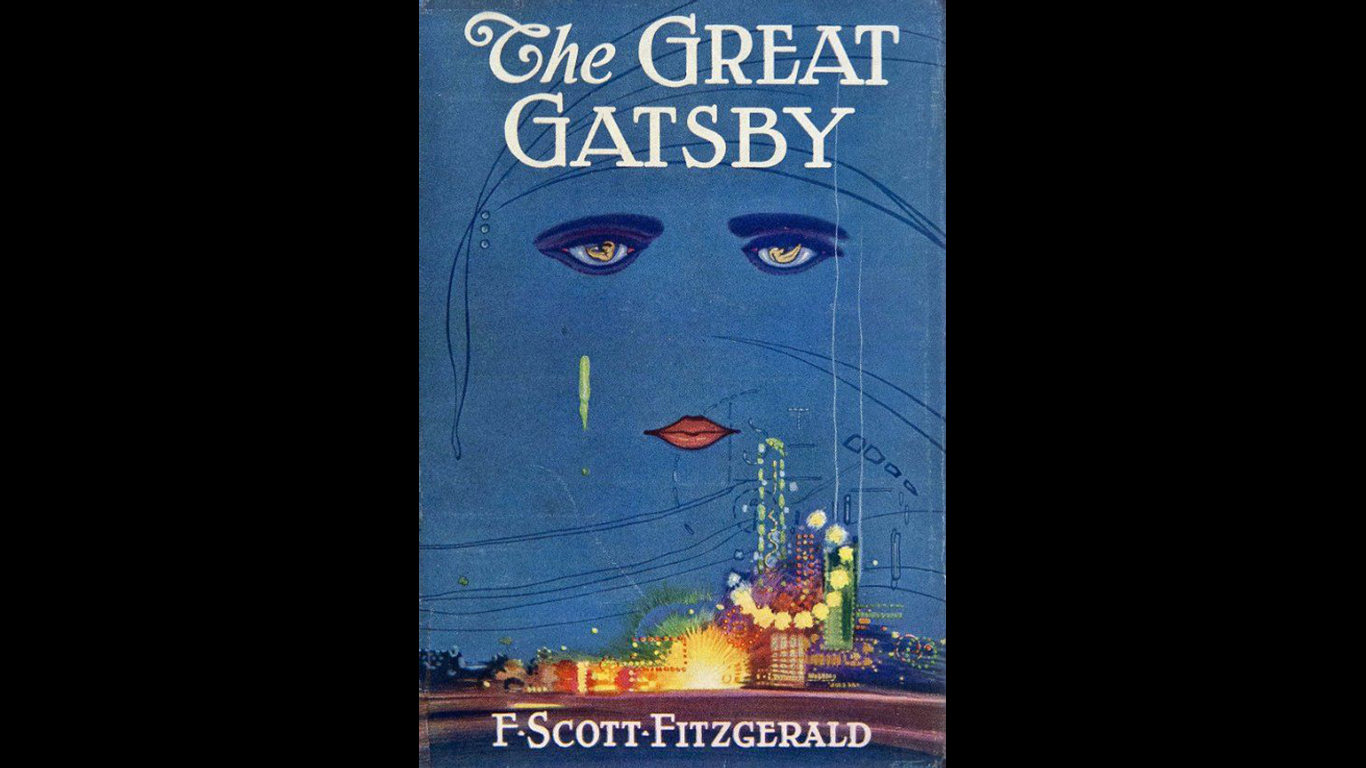
5. The Great Gatsby
> Author: F. Scott Fitzgerald
> Originally published in: 1925
The novel was written in beautiful prose, and “its stylish poetic deconstruction of the American Dream remains timeless,” Uruburu said. The basic themes of love and rejection are immortal. Almost anyone can connect with the book on some level — emotional or psychological.
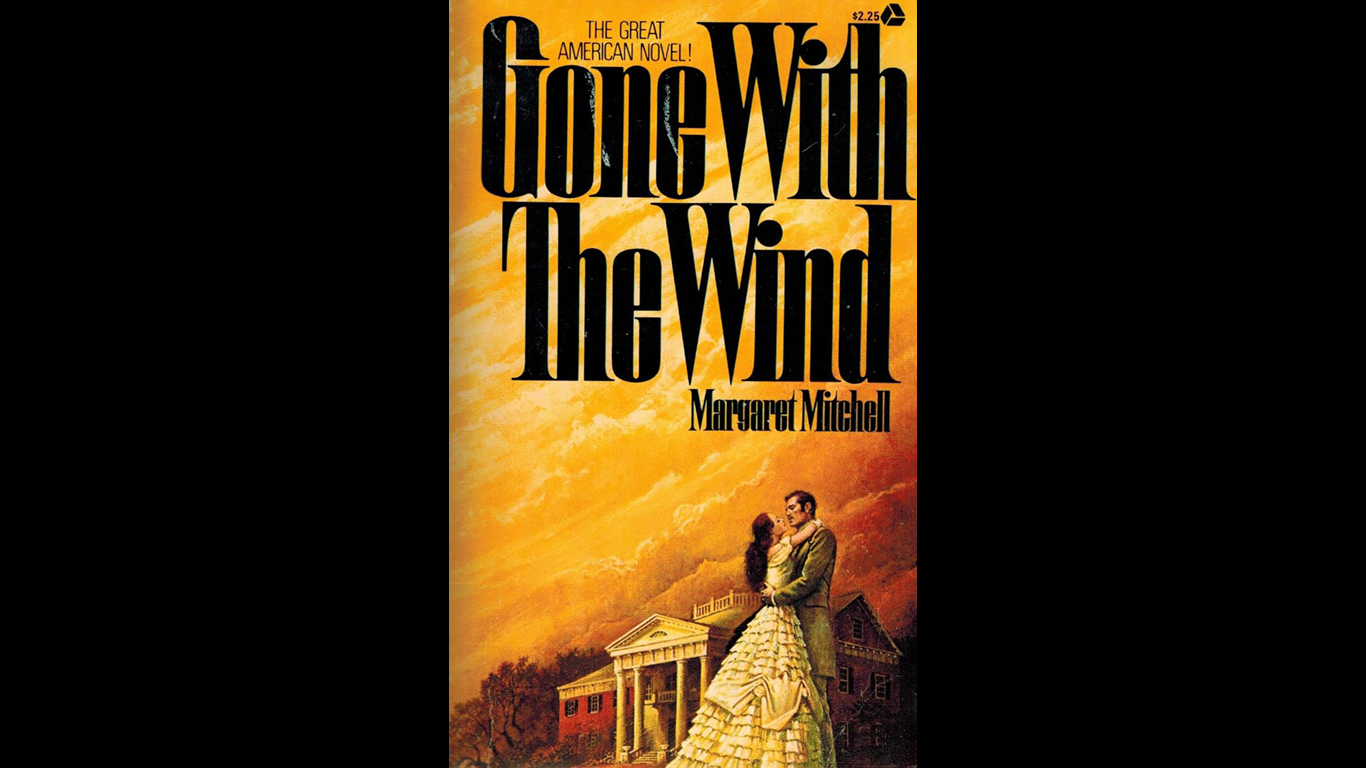
6. Gone with the Wind
> Author: Margaret Mitchell
> Originally published in: 1936
“Gone with the Wind” seems to be either loved or hated by people and other writers, and this is true even among English professors. “No need to perpetuate the moonlight and magnolias myth of slavery,” Uruburu said. “It was a potboiler then and still is now.”
Hate it or love it, there is a lot that can be discussed about the good — and independent and determined modern woman, which was unusual at the time — and the bad, slavery and racism. Perhaps the mere fact that it’s such a divisive novel — and so is the film — is enough reason to read it, and decide for yourself.
The novel is loved by the older generation, according to Buster, and the movie only bolstered its popularity. “But I can see it falling by the wayside as the years unfold.”
[in-text-ad]

7. Of Mice and Men
> Author: John Steinbeck
> Originally published in: 1937
This story about two displaced men moving from one place to another to find jobs offers resonating lessons to many. The two men are courageously following their dream, while showing the effects of isolation on people. The main characters, Lennie and George, have each other, which provides comfort as their isolation from society intensifies.
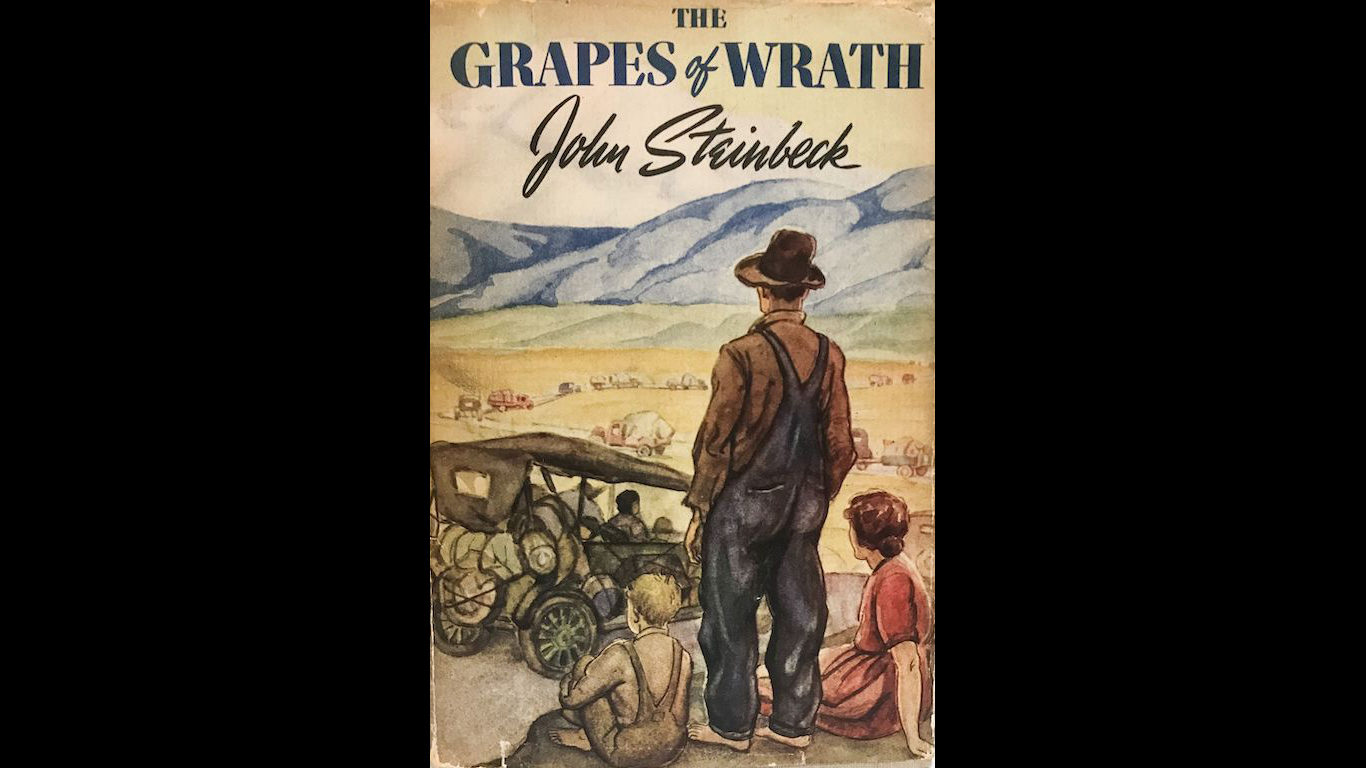
8. The Grapes of Wrath
> Author: John Steinbeck
> Originally published in: 1939
The novel is basically about the endurance of hardship during one of America’s darkest times, the Great Depression. “Its depiction of the Depression era makes it a must-read for those who do not know our own history and how class struggle was and remains a real issue,” according to Uruburu.

9. The Diary Of A Young Girl
> Author: Anne Frank
> Originally published in: 1947
The book, or rather a journal, is also known as “The Diary of Anne Frank.” In the diary, Anne, a Dutch Jewish teenager, describes her family’s life in hiding from the Nazis during the Holocaust, between 1942 and 1944. Frank and her family were discovered and sent to a concentration camp, where she died in 1945.
“A tragic brilliant evocation of one girl’s life cut short by intolerance and ignorance and her ability to maintain hope despite everything she faces,” Uruburu said. “It is especially relevant in an age where [there] are those who deny the Holocaust ever happened.”
[in-text-ad-2]

10. 1984
> Author: George Orwell
> Originally published in: 1949
1984 is one of the most widely-read and widely-referenced works of dystopian speculative fiction. It’s not just about censorship; one of the book’s main points is how technology helps create a mindless society.
Another important factor that makes the novel a classic is the “fear-mongering and mind control being used in a dystopic totalitarian society by soulless hate ghouls and dictators,” Uruburu noted.
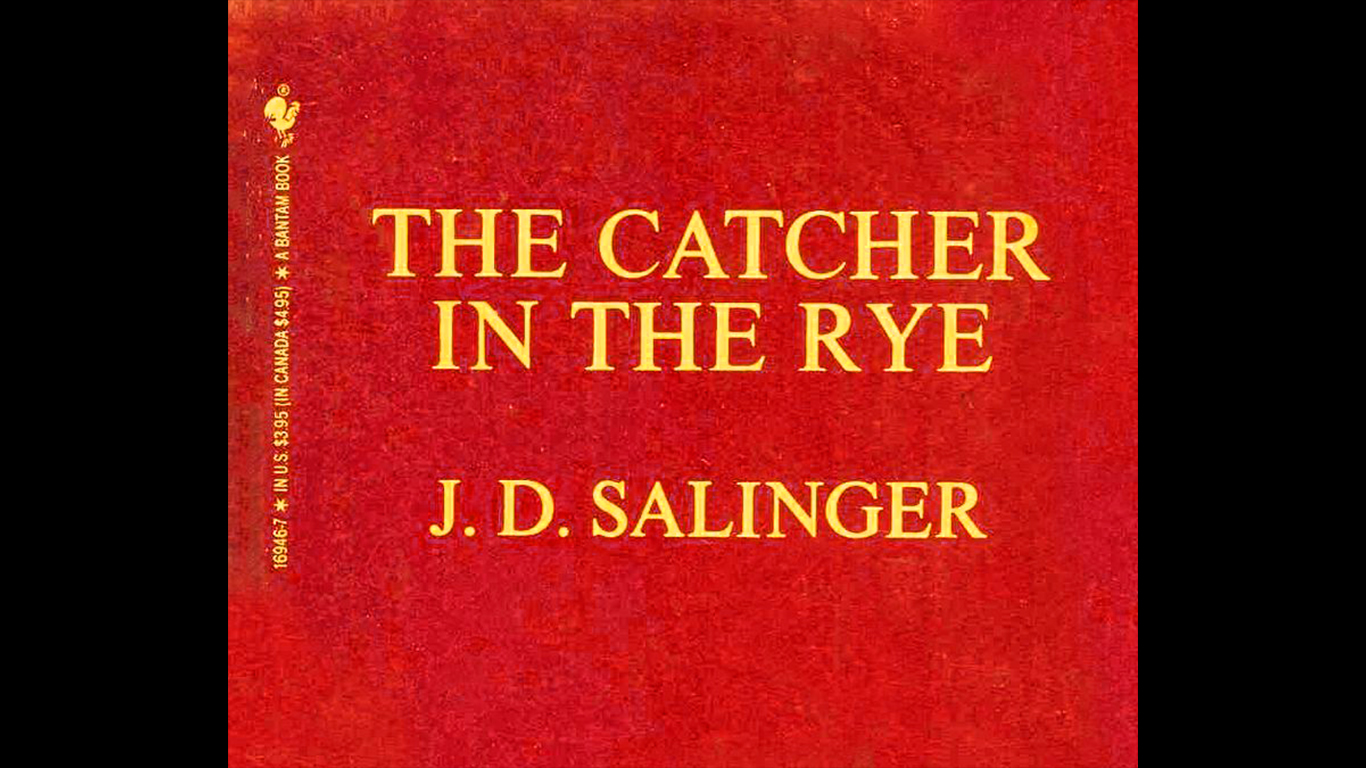
11. The Catcher in the Rye
> Author: J.D. Salinger
> Originally published in: 1951
Many people first read “The Catcher in the Rye” in high school. It resonates with students perhaps because the main character is himself an adolescent. The fact that it’s written in a conversational, and thus accessible style, also helps.
“A brilliant coming-of-age story that despite being somewhat dated perhaps remains a stylistic and linguistic marvel at capturing the way teenagers think and speak,” Uruburu said.
[in-text-ad]
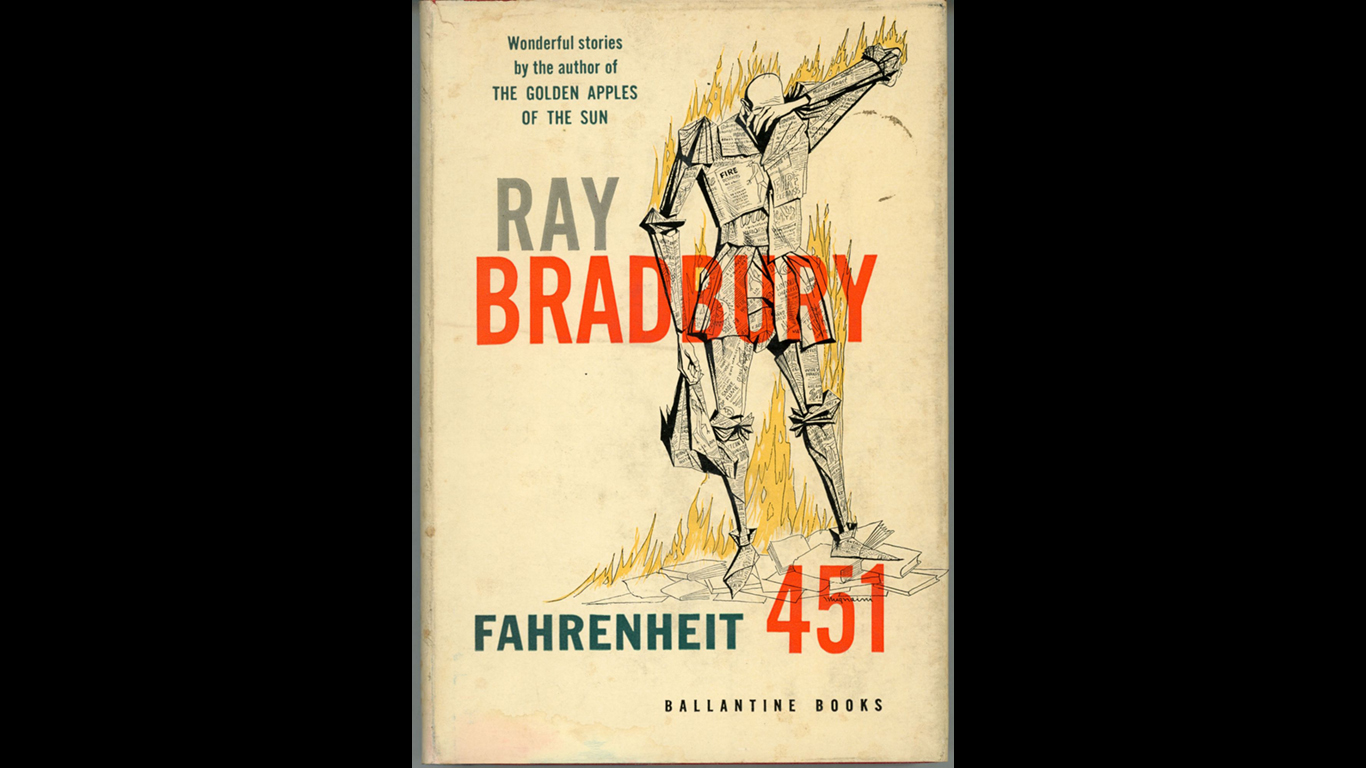
12. Fahrenheit 451
> Author: Ray Bradbury
> Originally published in: 1953
“Fahrenheit 451” is a classic that should be on any list of classic books for the same reasons “1984” should be. “Fahrenheit 451,” a staple of high school curricula, is a novel about an oppressive future and a dystopian society where books are illegal because of the government’s fear of a thinking society.
“This too is all too relevant today in its depiction of a not-too-distant-future government’s attempts at mind-control, addressing also issues of censorship and the value of personal privacy, independent thinking and heroism in the face of evil mindless brutality,” Uruburu said.
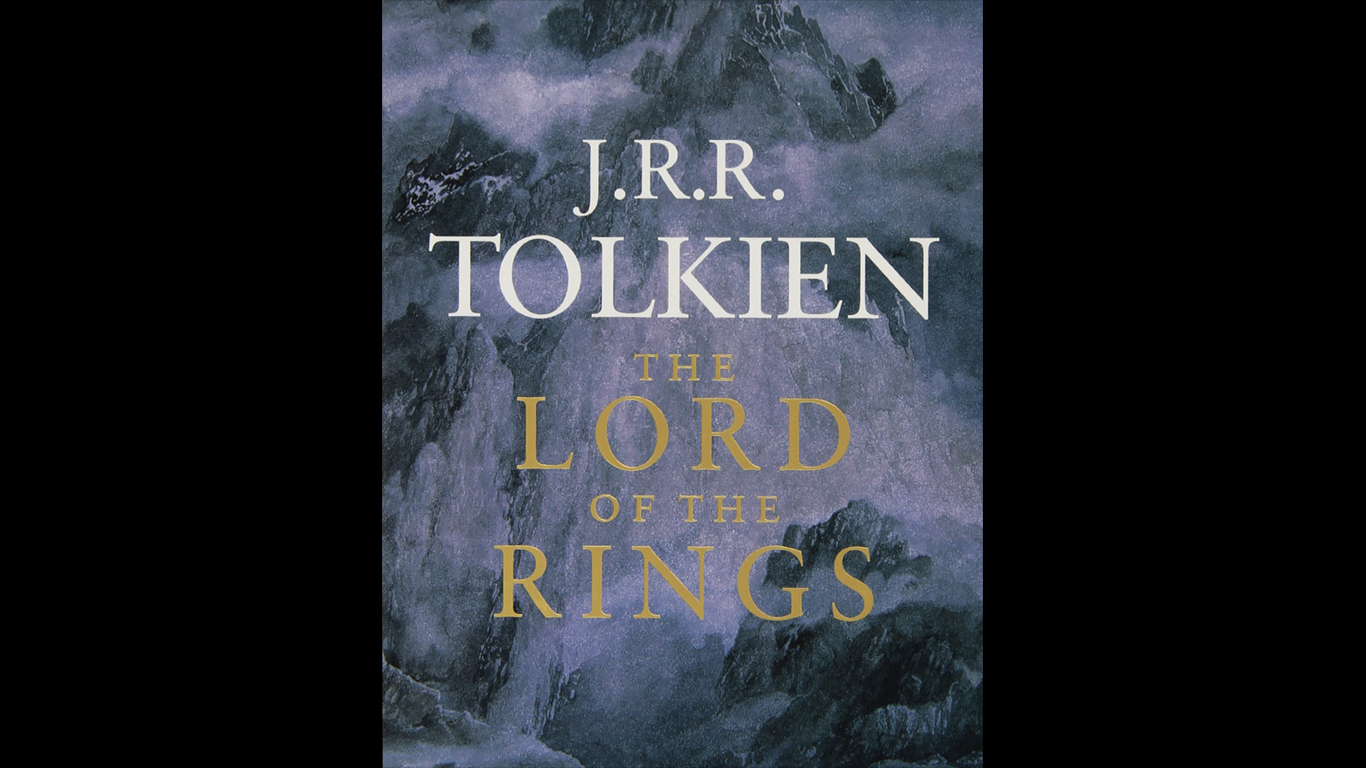
13. The Lord of the Rings
> Author: J. R. R. Tolkien
> Originally published in: 1954-1955
“The Lord of the Rings” is perhaps among the most famous fantasy novels ever written. It was published in three parts: “The Fellowship of the Ring” (1954), “The Two Towers” (1955), and “The Return of the King” (1955). At its core, it’s about good versus evil and heroes trying to save the world. The novel is a classic in part because “Tolkien wove its stories out of tales and patterns that themselves form our inheritance as readers,” Buster said.
The book would fit in what Uruburu calls classic sub-category. “‘Lord of the Rings’ is genre fiction (sci-fi/fantasy) which has wonderful style and substance — a deeper meaning and political/mythical context that adults should appreciate,” Uruburu said.
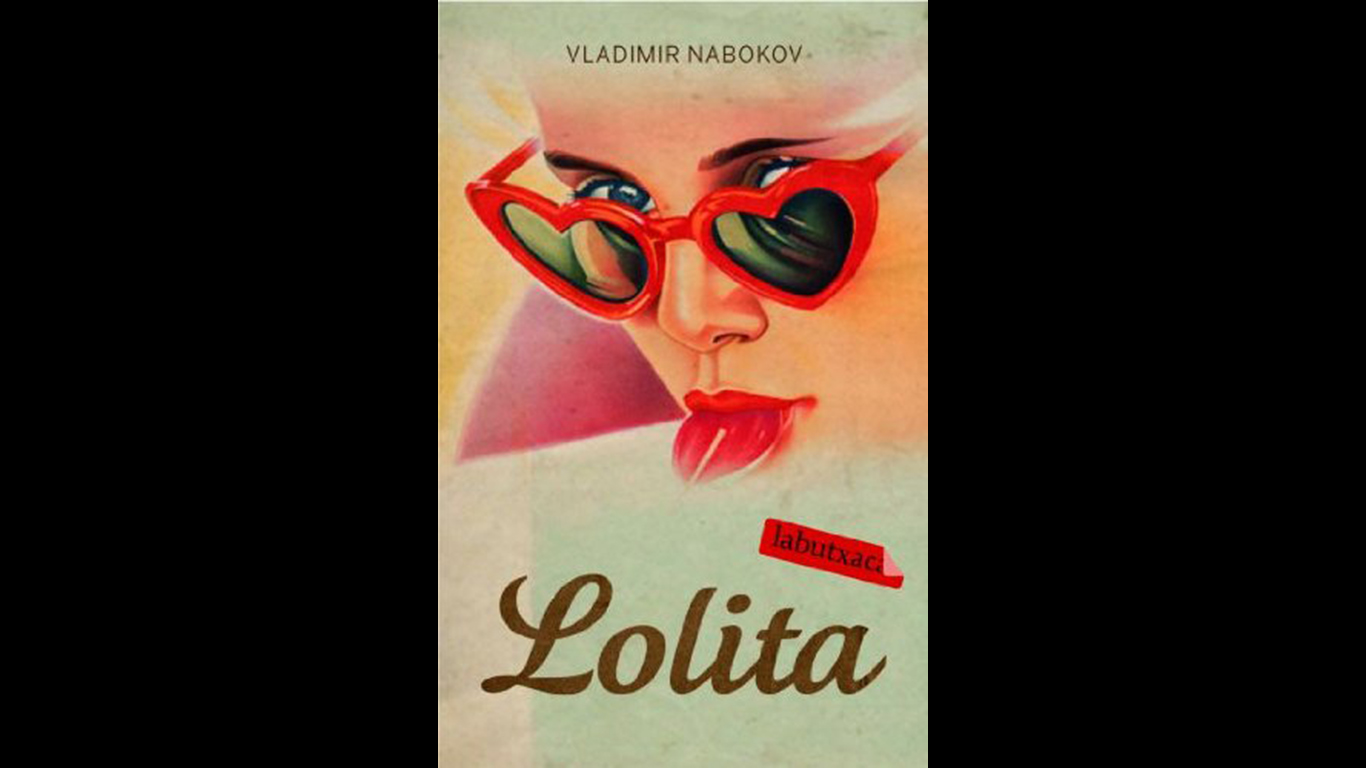
14. Lolita
> Author: Vladimir Nabokov
> Originally published in: 1955
It’s not uncommon to use literature to introduce and discuss taboo subjects. “Lolita,” which became a sensation after its publication in America in 1958, had been called a “disturbing masterpiece.” It’s about a man’s love obsession with his 12-year-old stepdaughter. The book is complicated on many levels and it lets people explore a side of the psyche that would otherwise be disregarded.
[in-text-ad-2]

15. On The Road
> Author: Jack Kerouac
> Originally published in: 1957
“On The Road” is based on the travels of the author and his friends across the country. As the main character, Sal Paradise, travels from New York to Colorado — following a friend who had moved there — he discovers a lot about himself and people in general along the way.
Uruburu recommends “On the Road” because of “its wonderful style and ability to capture a cultural moment of the endless horizon of American Dreams found and lost by a post-WWII generation.”

16. To Kill a Mockingbird
> Author: Harper Lee
> Originally published in: 1960
“Its depiction of intolerance and racism and notions of justice and the need for accountability and civic conscience is as relevant today as when it was written,” Uruburu said. “It also offers a life-affirming message about love and family which we also need today.”
This is a “simpler book” that has trickled down the curriculum, according to Buster. “And [is] ⦠now taught to students who are too young to appreciate [it].”
[in-text-ad]
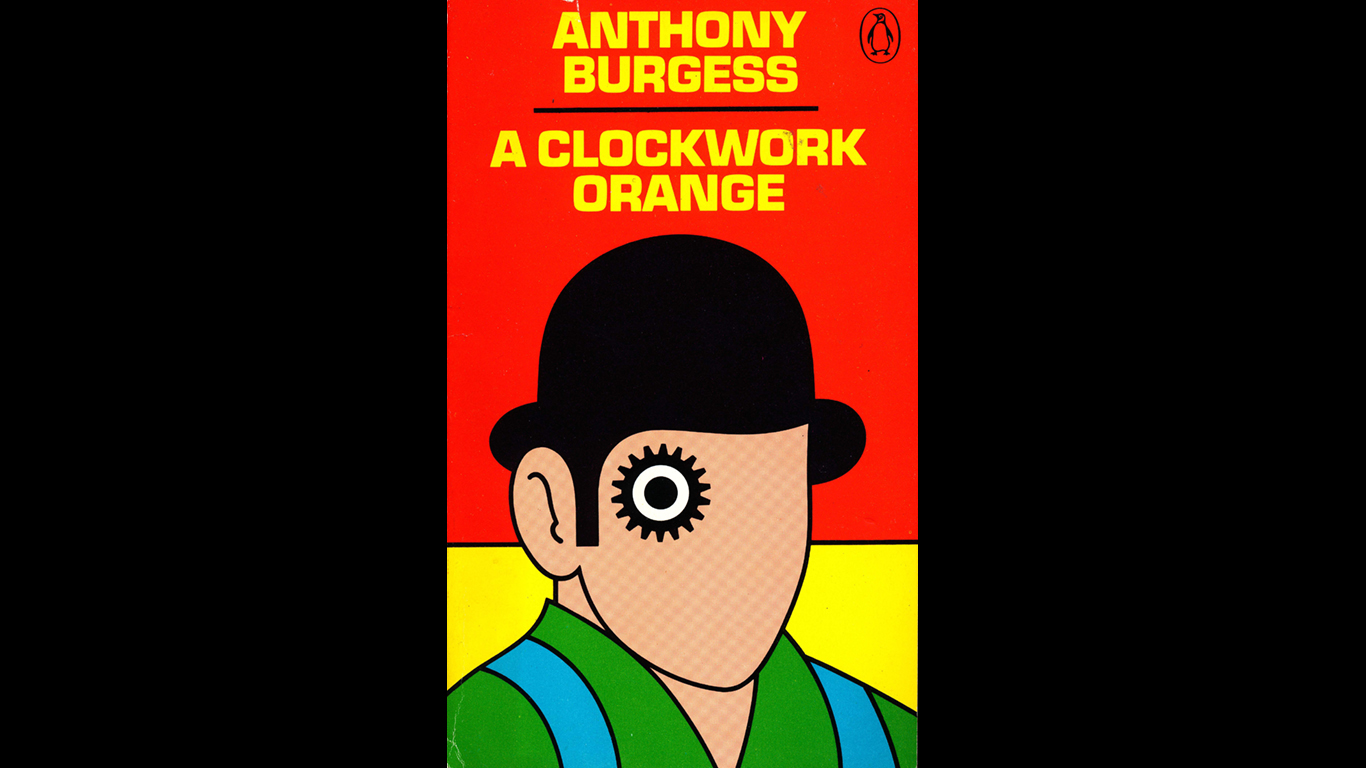
17. A Clockwork Orange
> Author: Anthony Burgess
> Originally published in: 1962
“A Clockwork Orange” is about a 15-year-old boy, Alex, who lives in a futuristic totalitarian society, where youth violence is rampant and ignored. Alex, who is the leader of a small gang that engages in violent acts, undergoes an experimental treatment to change his behavior. After two years in prison, he is released and becomes a political pawn between dissidents and the government.
Just like “Huckleberry Finn” or “Lolita,” “A Clockwork Orange” addresses controversial and disturbing topics, according to Uruburu. “I think the general belief is that issues of violence against women, slavery, anti-Semitism, homosexuality, etc. need to be confronted and discussed not excised from books and history.”
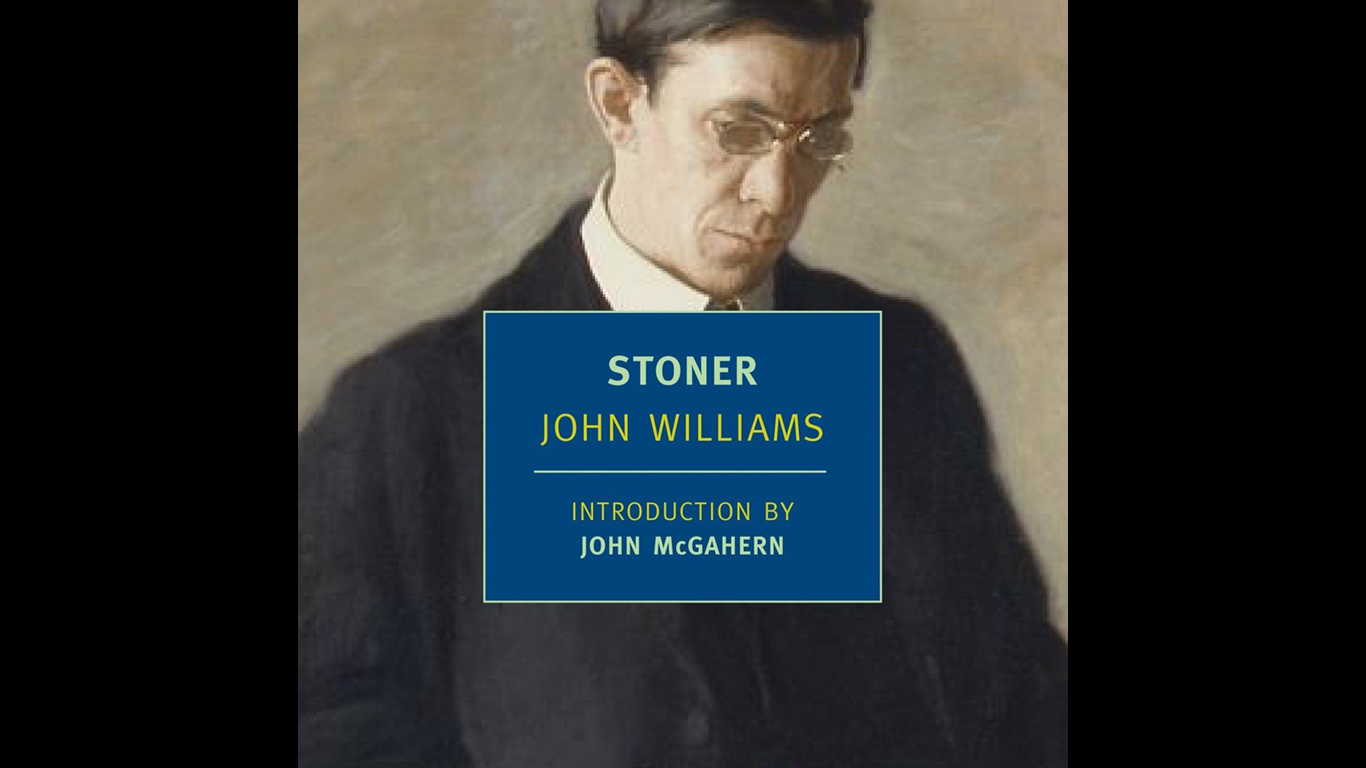
18. Stoner
> Author: John Williams
> Originally published in: 1965
“Stoner” is a book Buster “repeatedly” buys, especially to give to friends. “It’s one of the most beautiful novels I know.”
The New Yorker called it once “the greatest American novel you’ve never heard of.” It’s about an educated man who never seems to achieve success and struggles with disappointments throughout his life. The protagonist is basically someone who is — like the majority of the world’s population — an unglamorous, hardworking person whose marriage goes badly, is estranged from his child, and just lives the rest of his life pursuing a dead-end career.

19. The Handmaid’s Tale
> Author: Margaret Atwood
> Originally published in: 1985
This is a classic that should be on the list for the same reasons as “1984” and “Fahrenheit 451,” according to Uruburu. Moreover, the control over women’s bodies and their subjugation as an issue is alarmingly relevant today, she added. “These were all thought to be science fiction when they first came out or cautionary tales and now they are the reality of the current political state of affairs in this country.”
[in-text-ad-2]
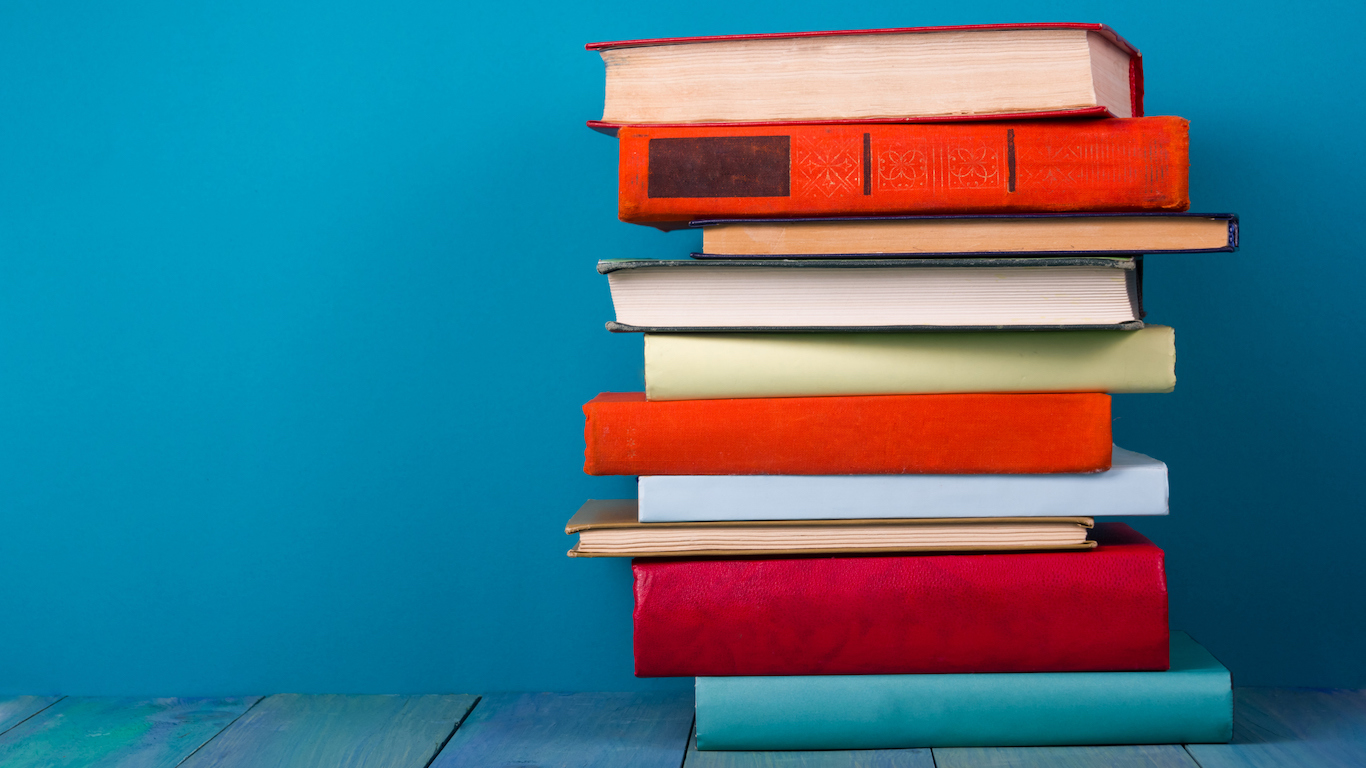
20. Whatever you’re interested in
“I think we should all read more, and all the time,” Buster said. “And that we should seek out authors from different eras, countries, and lifestyles as we do so.” If you have a particular hobby or interest, find out a play, novel, poem, or biography related to that topic. Such a piece can only help deepen what you already know and will help open doors to things you haven’t seen before,” he added.
The last few years made people forget how much banks and CD’s can pay. Meanwhile, interest rates have spiked and many can afford to pay you much more, but most are keeping yields low and hoping you won’t notice.
But there is good news. To win qualified customers, some accounts are paying almost 10x the national average! That’s an incredible way to keep your money safe and earn more at the same time. Our top pick for high yield savings accounts includes other benefits as well. You can earn up to 3.80% with a Checking & Savings Account today Sign up and get up to $300 with direct deposit. No account fees. FDIC Insured.
Click here to see how much more you could be earning on your savings today. It takes just a few minutes to open an account to make your money work for you.
Thank you for reading! Have some feedback for us?
Contact the 24/7 Wall St. editorial team.